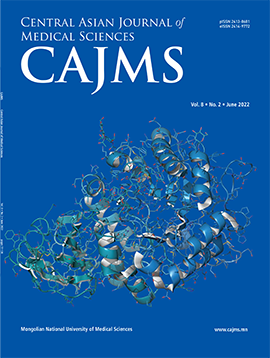Effects of Mongolian Medicine Modified Sugmul-7 on Hyperplasia of the Breast
DOI:
https://doi.org/10.24079/cajms.2021.09.009Keywords:
Mongolian Medicine, Hyperplasia of the Breast, Endocrine Function, ProteomicsAbstract
Objectives: The aim of this study was to explore the mechanism of regulating the endocrine function of hyperplasia breast in rats with Mongolian Medicine Modified Sugmul-7 (MMMS-7) by Proteomics and provide an experimental basis for its development and clinical application. Methods: Ninety female SD rats were randomly divided into 6 groups: the intact group – the animal group that was injected with neither estradiol, nor progesterone, nor administered Mongolian Medicine Modified Sugmul-7; the negative control group – the group injected with estradiol and progesterone; the positive control group - injected with estradiol, progesterone and administered mastodynon 0.06 g/kg; and the treatment groups – injected with estradiol and progesterone, each in their respective dose groups. After the start of the experiment, each rat except the intact group was intra peritoneally injected with estradiol 25d and progesterone 6d at a standard dose of 0.3 mg / kg for a total of 31 days. Results: Four differential proteins were found through proteomic analysis, namely Ppp3cb, Cacybp, Gstz1, and Nmd3 and their 5 related pathways. Conclusions: The above pathways are all known to be related to the treatment of breast hyperplasia caused by endocrine disorders. Treatment with Mongolian Medicine Modified Sugmul-7 is completed through regulation of the gastrointestinal and endocrine systems.
Downloads
243
Downloads
Published
How to Cite
Issue
Section
License
Copyright (c) 2021 Mongolian National University of Medical Sciences

This work is licensed under a Creative Commons Attribution-NonCommercial 4.0 International License.




